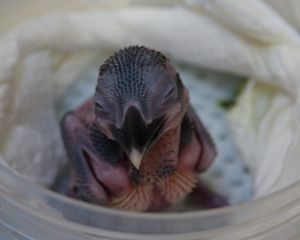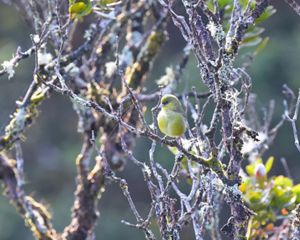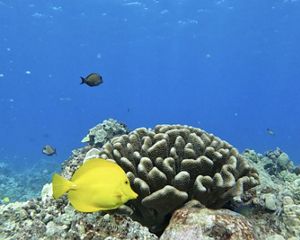
Nearshore reefs and waters support more than 7,000 marine life forms in Hawaiʻi, 25% of which are found nowhere else on Earth. But to have thriving reefs and oceans, we must also have thriving forests.
That’s why TNC is working to protect and restore natural systems from mauka to makai (uplands to sea), preserving unique ecosystems and supporting local communities, cultures, and economies. This includes restoring our coral reefs and protecting our native forests and native forest birds, who keep our forests healthy and are an important part of Hawaiian culture. We are also identifying ways to collaboratively restore degraded lands, implement land practices that build resilience against climate change and solve specific challenges such as reducing erosion, sediment and pollution.
Together, these efforts aim to protect and regenerate ‘āina (that which feeds, land and sea), ensuring a sustainable future for us all.
In Hawaiʻi, it’s in our nature to protect what matters.
How We Care for ʻĀina
To revitalize native forests and restore abundance to coral reefs, we will:
- Restore and Protect: Mālama native habitats and fisheries and drive funding and policy change for lasting conservation.
- Connect Lands and Sea: Restore mauka-makai connections and reduce land-based threats to coral reefs and coasts.
- Resist Extinctions: Safeguard critical island species and the native habitats that support and depend on them.
Restoring Reefs
Our reefs are under increasing pressure from sediments, land-based pollutants, unsustainable fishing and climate change impacts, including rising sea levels and water temperatures, which are expected to intensify in coming years. TNC’s marine scientists are collaborating with federal, state and community partners to co-create a shared standard of excellence for science-based, adaptive and community-driven restoration in Hawaiʻi.
Our work with many partners aims to sustain Hawaiʻi’s spectacular coral reef ecosystems and their vital contributions to Hawai‘i’s people, culture, lifestyle and economy, providing more than $2 billion each year in flood protection and reef-related tourism alone.
The Power of Reefs
We are piloting reef restoration at sites where corals have been lost but where the reefs have proven to be resilient—meaning the corals resisted or are recovering from climate-related bleaching—and where communities and government partners are implementing complementary efforts to reduce reef-damaging threats and improve reef health.
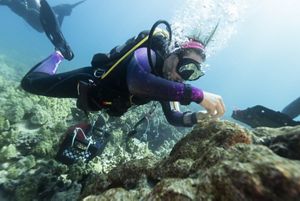

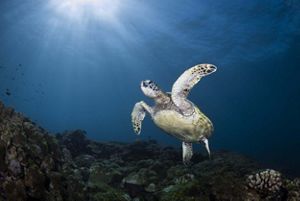


Planting Coral: TNC marine project manager Julia Rose plants coral pieces in Kahuwai Bay coral restoration project. © Jessica Glazner/Liquid Cosmos Photo

Fishing for science: Researchers examine one of the key fish species under study. © Grady Timmons/TNC

Into the Light: A green sea turtle (Chelonia mydas) rises from the reef off the North Shore of Oahu, Hawai‘i. © Kathleen Rose / TNC Photo Contest 2022

Marine Monitoring : A marine monitoring and research team studies coral reefs and reef life at Palmyra Atoll. Palmyra Atoll is one of the most spectacular marine wilderness areas on Earth. © Tim Calver
Protecting Native Forests & Forest Birds
Quote: Lucas Behnke
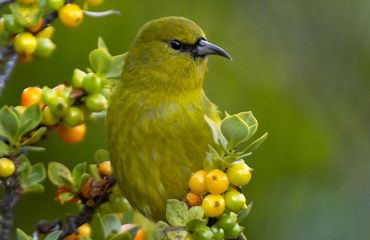
I’ve seen the forests flourish in the special places we protect. Our work is critical to save what’s left of our native forest birds and their unique habitat. My hope is to return to these places and see birds rebounding. I would like it to get loud in the forest again.
Hawai‘i’s melodious and beautiful honeycreepers evolved with the Hawaiian Islands over millions of years, and they play a critical role in keeping our forests healthy, which in turn provides freshwater to our communities across the islands.
We are losing these birds in our lifetime. Once, there were more than 50 species of honeycreepers. Today, only 17 remain and 11 are endangered.
Avian malaria, transmitted by invasive mosquitoes, is decimating native honeycreepers. As a warming climate allows the insects access to higher elevations where the birds were previously safe, TNC is working to protect these birds in two key ways:
- We’re protecting high-elevation habitat like TNC’s Alakaʻi Plateau where the birds can live without the threat of mosquitoes
- We’re working with a coalition of partners to deploy an Incompatible Insect Technique to crash the mosquito population
Connecting Land and Sea: Saving Wai and Kai
Across Hawaiʻi, the uncontrolled movements of invasive pigs, goats and deer devastate mauka areas, including vital island watersheds. As a result, rains and loose soils transported in streams inundate communities living in makai areas and nearshore coral reefs. TNC works with government agencies, local leaders and the hunting community to reverse this damage and reduce downstream impacts by limiting the movement of these feral hooved animals.
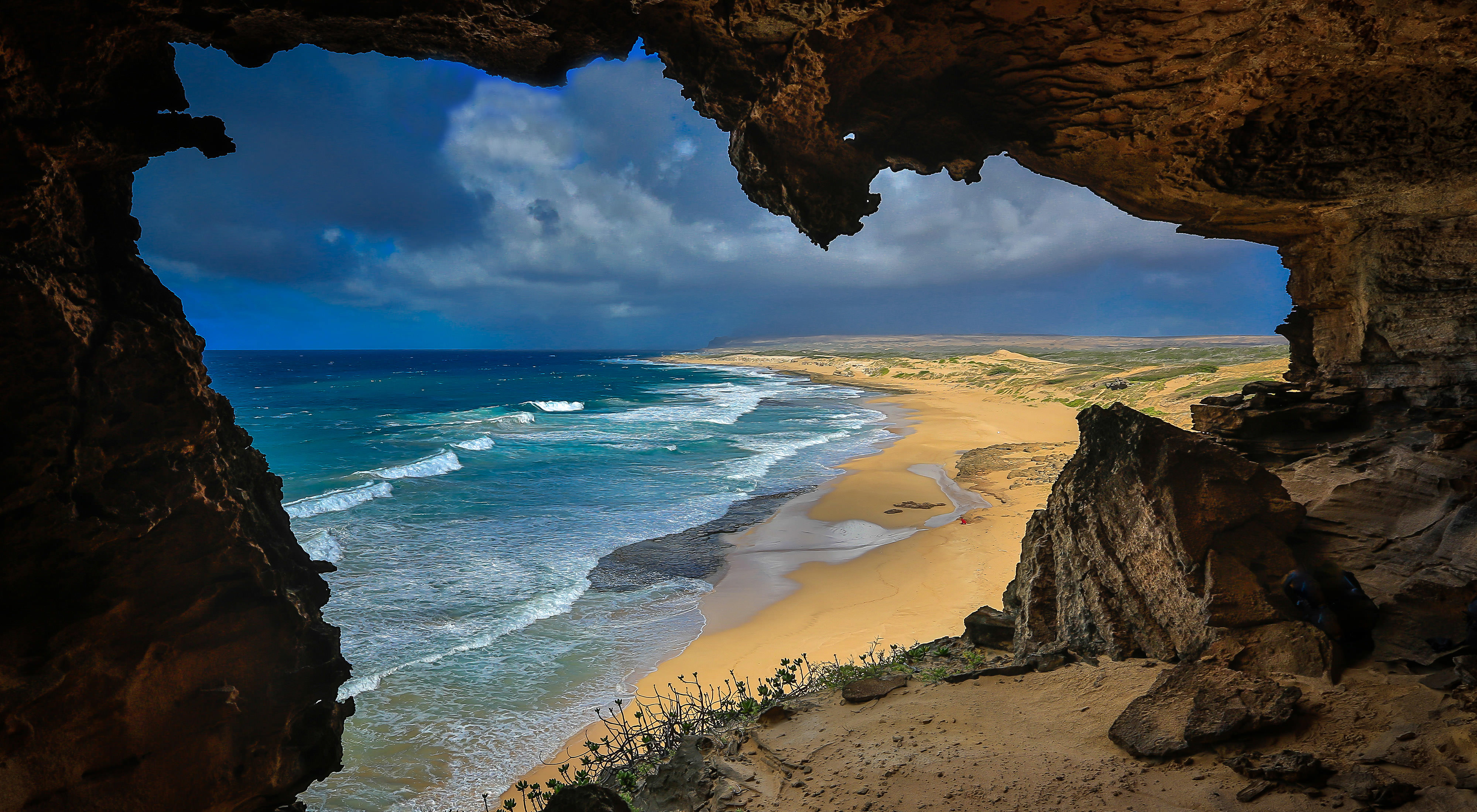
Staff Spotlight on Molokai
Russell Kallstrom is the Molokai Program Manager for The Nature Conservancy and a Kawela resident for more than 20 years, living and working in one of the largest watersheds in the East Molokai mountain range. He’s seen firsthand the threats facing this watershed and its stunning nearshore reef.
“In 2001, we experienced a deluge that turned my own backyard into a brown, rushing river, bringing with it tons of sediment. We were luckier than most; people’s houses were flooded and filled with mud. A neighbor pointed out a historic site, an old Hawaiian rock wall, that was covered with a foot of sediment. I realized that our heritage is being buried,” Russell recalled.
“It has been painful to watch first-hand irreplaceable archaeological sites obscured and our beaches changing from sand to dirt. It’s also a reminder of the last couple hundred years of losing fish ponds along our coasts as they filled with sediment,” he said. “But I’m inspired by the work we’re able to do to reverse that, thanks to donor support, community engagement, our own hard work and active partnerships. People don’t realize how much better things are now in Kawela. I’ve seen a barren moonscape become a healthy shrubland dominated by native plants. It’s exciting to know our work is providing fresh water and a healthy reef for all on Molokai for generations to come.”
Resist Extinctions
Hawai‘i is home to 44% of the nation’s endangered and threatened plant species. TNC and partners are working to resist extinctions through habitat protection and restoration and species interventions.

Sihek Return to the Wild
TNC is working with the Sihek Recovery Partnership, including the Guam Department of Agriculture and zoos and organizations around the world to rewild the sihek (Guam kingfisher) at our Palmyra Atoll Preserve. After decades of work by TNC and partners to restore the atoll, it is now predator-free, with abundant forest canopy and appropriate food sources for the sihek, offering these once extinct-in-the-wild birds a perfect home.
These colorful birds are native to Guam, where they have deep cultural and spiritual significance. The arrival of the invasive brown treesnake in the 1940s led to the sihek becoming extinct in the wild in their native Guam, with the last wild sighting in 1988.
Now, after years of care in facilities and numerous trials rearing chicks, nine birds were transported to TNC’s Preserve at Palmyra Atoll, where they acclimated in aviaries before being released into the wild. The four female and five male birds quickly explored their new home, learning how to forage and hunt new prey within the tropical forest. Four pairs have since established territories, built nests, and three of the pairs have laid eggs, marking the first time the species has bred in the wild since the 1980s.
This project acknowledges the hard work of many partners including Guam Department of Agriculture, Association of Zoos & Aquariums, The Nature Conservancy, US Fish & Wildlife Service, and Zoological Society of London.
Make a Difference in Hawaiʻi and Palmyra
The Nature Conservancy works with people like you to protect Hawaiʻi and Palmyra’s spectacular diversity of life. Together, we can protect the plants and animals that share our world and support our well-being. We invite you to join the effort.
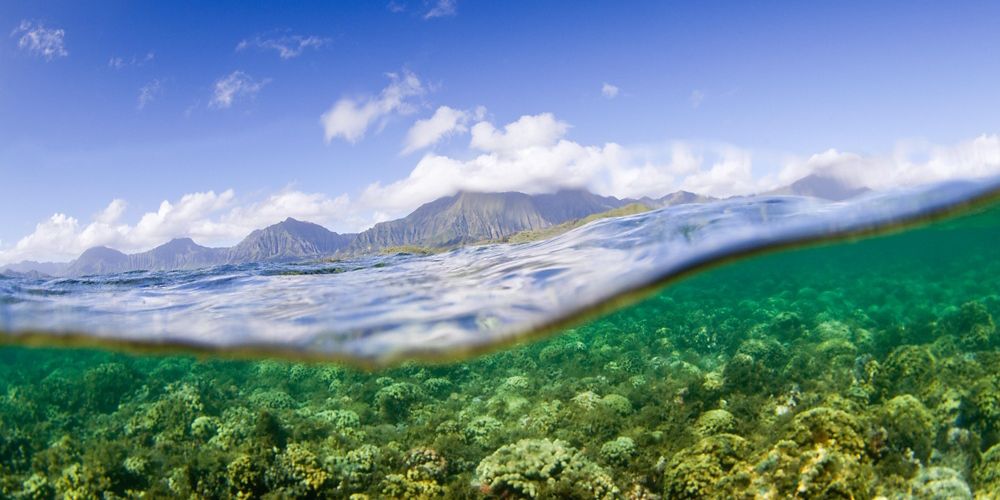
It’s in our nature to protect what matters
Sign up to receive monthly conservation news and updates from Hawai’i & Palmyra. Get a preview of Hawai’i & Palmyra’s Nature News email.
